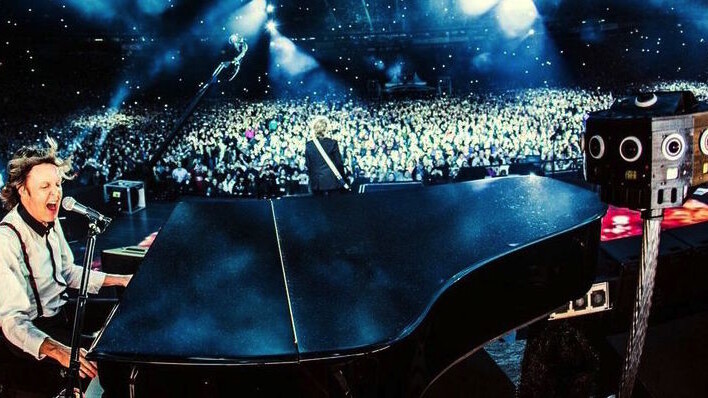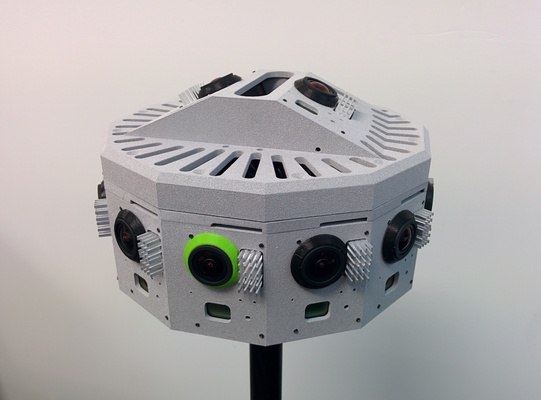
A concert video from music legend Sir Paul McCartney is the first publicly available content from cinematic virtual reality startup Jaunt. Owners of Google Cardboard and a compatible Android device can download a free app to watch McCartney perform “Live and Let Die” at Candlestick Park through an immersive 360-degree 3D video.
Notably, McCartney’s performance was the final concert at Candlestick Park before the stadium was closed.
Jaunt uses a custom camera rig to record spherical audio and video that can then be rendered for virtual reality headsets like Google Cardboard, Oculus Rift and Samsung’s upcoming Gear VR. The company plans to release the “Live and Let Die” video on Oculus and Gear VR soon.
The results are amazing. I’ve never been a huge fan of concert footage, but getting a 360-degree view from on-stage is another experience altogether. Being able to turn your head to watch different parts of the scene adds an important feeling of presence. I did, however, prefer the fidelity on the Oculus Rift version I tested to the Google Cardboard version on a Nexus 5.
The video features one camera set up next to McCartney’s piano and another positioned near the front of the stage. The camera prototype has a blind spot directly beneath it that disrupts the illusion when you first start watching, but you should be able to tune it out after a bit.
Jaunt’s partnership with McCartney is the first time that consumers can try out its 360-degree video technology. The company has been quietly working on its camera rig and content to take advantage of it. Jaunt emerged from stealth earlier this year and raised $27.8 million in Series B funding in August.
Cinematic virtual reality is a space to – pardon the pun – watch as VR headsets hit the market. While gaming has been a primary focus for Oculus developers, it still has limited appeal. Video, on the other hand, is practically ubiquitous.
While Jaunt’s technology has removed many of the limitations to 360-degree video, filmmakers will need to adapt to the new medium. Since viewers can choose where they look in a scene, Jaunt-filmed videos will need to provide visual and audio cues on where to look.
Not knowing where to look, could actually be used as an advantage. Horror films, for instance, can use it to up the suspense. When used properly, the result will be terrifying.
Jaunt could also offer immersive relaxation scenes that are designed to let viewers look anywhere they please. For instance, I’d love to put on a VR headset and be teleported to 360-degree video footage of an empty beach at the end of a long day.
In order to avoid warping and focus issues, Jaunt uses multiple cameras around a sphere in order to simulate a virtual camera at the center point. Stitching and rendering a Jaunt video takes roughly 15-20 minutes per minute of footage. That’s a noticeable delay for most filmmakers, but Jaunt VP of Content Scott Broock notes that it’s still fast enough for directors to review footage on set.
The final result is an H264 file compatible with existing video editors. Jaunt also supports Dolby Atmos so that audio tracks can be placed accurately in three dimensions. Playback and file sizes are lightweight enough that Jaunt content works well on mobile devices.
I’ll go out on a limb and say that today’s launch of the first Jaunt content is an exciting preview of the future of immersive video experiences. It’s going to take a while for producers to figure out what to do with this new format, but I can’t wait to see what people come up with.
See also: The Who embraces Oculus Rift as it (rock and) rolls out a new immersive 3D app
Get the TNW newsletter
Get the most important tech news in your inbox each week.






